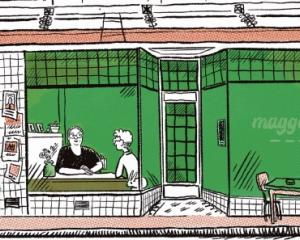Kate Cole-Adams offers a fascinating insight into a medical marvel.
ANAESTHESIA
The Gift of Oblivion,
the Mystery of Consciousness
Kate Cole-Adams
Text Publishing
A surgeon’s amputation kit of a couple of hundred years ago, to be seen in many museums, says it all. Horrifyingly. With no anaesthetic available except for the likes of whisky, surgeons competed to offer the fastest job. A leg could be off in 30 seconds. No disinfectants, no antibiotics, yet many victims survived.

Modern anaesthesia is astonishingly complex. Apart from the obvious major divide between local and general, a wide variety of different anaesthetics available, chosen in combination to suit the specifics of the individual patient. Yet the hard fact remains that a science discovered empirically is routinely used to deprive people of their consciousness without a deep understanding of what consciousness really is.
The true origin of scientific discoveries is often lost in the mists of antiquity. Anaesthesia is no exception.
The author focuses on two of the several 19th-century contenders for fame. Dentist Horace Wells picked up on the idea of a clinical use for laughing gas through watching its effects in stage high jinks. After a few successful trials on patients, he rather blew it with a public demonstration in 1845 in which his patient cried out (but, in fact, remembered no pain later).
In 1846, also before an audience, Wells’ colleague William Morton anaesthetised a patient successfully with ether while a surgeon made a long incision to treat a neck tumour. Credit often goes to the first to demonstrate something, especially if it works.
People sometimes fear not waking up from an anaesthetic, an extreme rarity now below 0.001%. It seems they fear much more the notion of some degree of awareness in the middle of surgery, claimed to happen perhaps 0.1% of the time.
"Perhaps", because such claims have tended to be received a little sceptically at times, and unpicking genuine experiences from dreamy imagination can be fraught with uncertainty.
Anaesthesia alone can leave a patient’s muscles tense, making surgery difficult, so a muscle relaxant is given at the same time.
This incidentally lowers the dose of anaesthetic needed, but may explain why any awareness during surgery is often associated with inability to move or signal the situation. Neither too much nor too little anaesthetic is desirable, naturally, but increasingly sophisticated monitoring electronics help the anaesthetist to keep the dosage accurately adjusted throughout the operation. Pre-treatment such as hypnosis can be helpful.
The author has done considerable research, watched anaesthetists at work, and incorporated her own and family experiences together with numerous anecdotes to create a rich read. Told in the true style of an experienced journalist, this fascinating insight is very well-supported with references to books and scientific papers.
- Clive Trotman is a Dunedin scientist and arbitrator.












